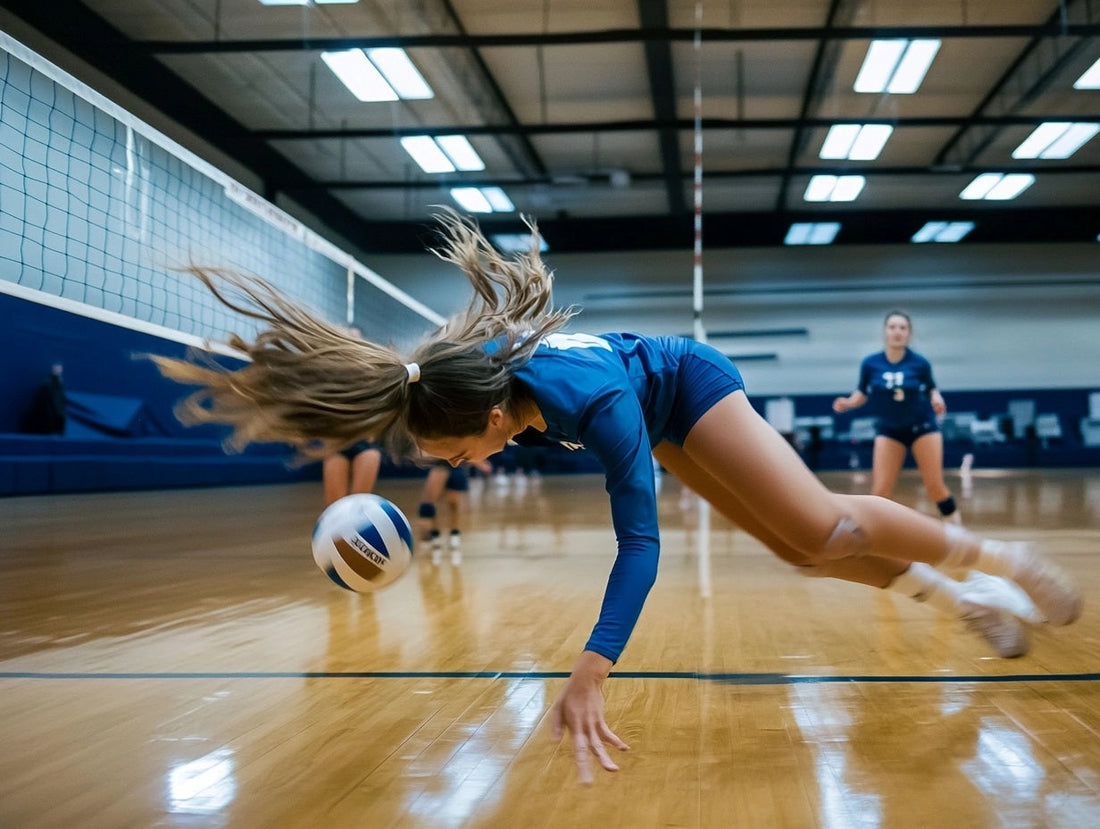
Preventing Concussions in Girls Volleyball
Share
Preventing Concussions in Girls Volleyball: Safety First on the Court
Volleyball is a fast, exciting sport that challenges athletes both mentally and physically. While it’s generally considered low-contact compared to sports like football or hockey, injuries can and do happen—including concussions. For girls who play volleyball, understanding the risks and taking steps to prevent concussions is essential for long-term health and continued success in the game.
How Concussions Happen in Volleyball
A concussion is a type of traumatic brain injury caused by a bump, blow, or jolt to the head or body that causes the brain to move rapidly inside the skull. In volleyball, concussions often occur from:
-
Collisions between players going for the same ball
-
Hits to the head from a spiked or served ball
-
Falls or dives that lead to the head hitting the floor
-
Contact with poles, walls, or benches during fast-paced play
While these situations aren’t as common as in high-contact sports, they’re still real risks—especially in competitive, fast-paced matches or during intense training sessions.
Prevention Starts with Awareness
The first step in preventing concussions is educating players, coaches, and parents. Understanding the signs—like dizziness, confusion, nausea, headaches, or blurry vision—is key. Players should always feel comfortable reporting any symptoms, even if they seem minor. No game is worth risking long-term health.
Coaches should also encourage a culture where safety is a top priority. That includes regular discussions about injury prevention, proper warm-ups, and clear communication during play to avoid collisions.
Technique Matters
Proper playing technique goes a long way in preventing head injuries. Teaching players how to dive safely, how to call for the ball, and how to move around the court with spatial awareness can reduce the chances of collisions and dangerous falls.
For example, when two players go for the same ball without calling "mine," they risk running into each other—headfirst. Coaches should stress the importance of clear, loud communication and trusting teammates to avoid confusion.
Additionally, training players to keep their heads up and alert during play helps prevent accidental contact with hard surfaces or equipment.
Protective Gear and Court Setup
While volleyball doesn’t traditionally involve helmets or heavy padding, there are still some ways to add protection. Padded headbands, for instance, can help reduce the impact from minor hits. These are especially useful for liberos and setters, who often make quick, diving plays near the floor.
Ensuring that courts are set up with adequate padding around poles and walls is also important. Tournaments and practices should be held in gyms where space around the court minimizes the chance of players hitting hard objects when chasing a ball.
Encouraging a Smart Return-to-Play Protocol
If a concussion is suspected, the player should be removed from play immediately and evaluated by a medical professional. There should be no pressure to "tough it out" or return quickly. Following a proper return-to-play protocol ensures the athlete fully heals before getting back on the court.
Final Thoughts
Volleyball should be fun, competitive, and safe. By emphasizing awareness, communication, proper technique, and smart prevention strategies, girls can enjoy the sport they love while staying protected. Preventing concussions isn’t just about avoiding injury—it’s about ensuring a lifetime of healthy play and strong performance.
